Don't Go In The House (1979)
Directed by: Joseph Ellison
Written by: Joe Masefield, Joseph Ellison
Starring: Bill Ricci, Charles Bonet, Dan Grimaldi, Ruth Dardick
Don’t Go In The House (1979)
First Released: 1980
Director: Joseph Ellison
Current UK Status: Passed 18 uncut
Probably one of the better known Video Nasties, Don’t Go In The House is the first (alphabetically) in a line of “Don’t” warnings on the list. The film was first released in UK cinemas in 1980 after heavy cuts from the BBFC, and this version was released by Arcade Video in 1982. Later Arcade Video released the uncut version for home video, and this was added to the Video Nasties list in July 1983. The film was soon removed from the list, and re-released on the promise that only the BBFC cut version be sold. The film was once again re-released in 1987 with 3:05 seconds of cuts, and eventually released completely uncut by Arrow this year for the DVD & Blu-ray release.
Director Joseph Ellison has only ever made two films, Don’t Go In The House (1979) and Joey (1986). However, after spending much of his youth falling in love with music and moving around the US thanks to his Texan born Father, Ellison eventually fell in love with movies in the 1960’s. After leaving University in 1971, Ellison decided to become a filmmaker, and spent most of the 1970’s working on other people’s films during the post-production process and also on several exploitation movies. He was even asked to appear in Geroge A. Romero’s The Crazies, but had to decline due to scheduling conflicts. Ellison made his first film, Don’t Go In The House, in 1979. Ellison both wrote and directed the film which, along with William Lustig’s Maniac (1980) became a target of feminist groups claiming the films to be misogynistic. Don’t Go In The House was released as the Video Nasty craze was about to hit, however the film was already making audiences upset in the US. During a “double feature” in the US, Don’t Go In The House was played after the classic slasher Friday the 13th. While the audience cheered, laughed and clapped to Friday, they did not have so much fun with Don’t Go In The House: there was no cheering or laughing, just a group of very disturbed individuals. The film received nasty reviews, some calling both the filmmaker and audience members “sick”, while others called it “trash”. Needless to say, the critical response and overall effect of the film left Ellison shocked, and he did not make another film until Joey in 1986. The rarely seen film was a drama about a teenage boy who runs away from his drunken Father in order to start a music career. The film was largely ignored, and Ellison retired from filmmaking.
Don’t Go in the House is one of the more menacing of the Video Nasties, and adds itself to the list of genuine shock movies that were not exactly a whole lot of fun to sit through. For many back in those days, films like this would have left a lasting impression, and while by today’s standards Don’t Go in the House is pretty tame, it is the intent and the deeply disturbed character of Donny Kohler (Dan Grimaldi) that makes this one of the darker films on the list. This film is uncompromising and unapologetic in its rawness and utter discontent for the viewer. Director Joseph Ellison take you into the mind of a killer, and into the troubled past which made him the way he is today. If anything, it is the scenes of a young Donny being tortured by his Mother which upset more than anything. As his Mother holds his arms over a gas cooker and burns them, little Donny screams and begs for his Mother to stop as she bellows: “I’ll burn the evil out of you!!!” To be fair, the little boy playing the part is a tad annoying, but it is the thought of this horrific woman with absolute hatred in her eyes, desperately wanting to inflict pain on her own flesh and blood that chills. There is a final scene involving yet another young lad being hideously beaten by his Mother as a rewarding payoff come the end, and that too is one of the hardest to watch scenes in the film.
As you can tell, Donny is trouble, and we learn it early on as his colleague in the factory where he works is filling an incinerator, and an accident leaves him on fire. As Donny looks on, you could argue that he simply froze and panicked, but look into his eyes and it is clear he got some enjoyment from this accident. It also helps with the way the camera zooms in on his face, and the music emphasises the fact he is not your average fella. The scene is chilling, and sets up our psycho wonderfully. This man has been subjected to abuse over the years, and now has a vile attachment to his Mother to the point that when he arrives home to find her dead, he does not believe it. Instead of calling for an ambulance, he decides to shout at her to “drink your tea!!!” With his Mother gone, voices in his head tell him he is now free, and like a child he turns his music up loud (“can I play my music loud?”), jumps up and down on the sofa and lights a cigarette. His happiness is stalled as he hears his Mother calling him, and from this point on he turns into a monster, and decides the only way to shut her up is to punish innocent women by burning them alive.
Donny’s first murder is cold and calculated as he goes to a florist to buy “flowers for his sick Mother”. Creepily playing the nice guy to the attractive shop worker who was actually closed, a turn of events allows Donny to offer her a lift home. However, he decides to stop to check on his Mother, brings the girl inside and this seals her doom. Once she realises the predicament she is in, she panics and attempts to call for help, but Donny is quick and next thing you know, the girl is chained and hung naked. The room is surrounded by fire proof steel walls, and Donny’s first murder is shocking and sickening. Walking into the room with full fire protective gear, he blasts the poor girl with a flame thrower. Now, back then scenes like this would not exactly be common, and the well designed effects make the whole thing quite believable, and ultimately frightening. The rest of the film see’s Donny hungry for more victims as he falls deeper and deeper into his own secluded world of depravity. He doesn’t show up for work, and he struggles to hold a conversation on the phone with his worried friend from work. Almost admitting he has a problem, he even goes to the local Priest for help, to no avail.
Suffering horrific nightmares, Donny is becoming increasingly unstable and more and more shut off from a normal life. In one of the films more unsettling moments, Donny has a nightmare which see’s him on a beach and suddenly dragged into a pit by burnt dead people. The effects are superb, and the whole scene is incredibly bleak, much like the entire film. There is no comedy to detach you from Donny’s disturbed world, and as he becomes more violent, we join him. At times Ellison masterfully portrays a man losing his mind, but deep down not seeing (or wanting)any way out. A later scene showing Donny shopping for clothes for a night out really shows how much of a pathetic man he really is. After years relying on his Mother, he has no idea how to shop for himself, and he is nervous as hell as the shop attendant tries to find him the best suit. However, it is a scene at a nightclub where Ellison really creates a near perfect study of a man lost in his own little world. Meeting with his friend from work, they have two girls lined up, but Donny is unable to loosen up or hold a conversation with his date. When she asks him to dance, the pain and suffering in his face, and embarrassment at the thought of doing normal things is almost too painful to watch. What follows is painful to watch as Donny lashes out, violently.
As expected, the film does lead to a horrific and violent finale filled with some shocking and wonderful imagery. The score to this film is bleak, moody and menacing and only emphasises the fact that we are sharing in the murky depths of Donny’s mind. The use of faint or extremely dark colours, and with much of the film focusing solely on Donny or based in his Mother’s home, all add up to a really raw and unforgettable movie experience which is far from pleasant. Grimaldi is surprisingly believable as Donny, and he remains one of the more memorable characters from the Video Nasty era. Ellison’s uncompromising direction and sudden bursts of gratuitous violence make Don’t Go In The House one of the few Video Nasties worthy of the tag. An unpleasant experience if ever there was one, but a film well suited to the horror genre. Horror is all about taking the viewer to places they may not want to go, but feel the need to not turn away, and Don’t Go In The House is the perfect example. You know you shouldn’t want to see what happens next, but something is telling you to keep watching. In a strange and macabre way, Donny is fascinating to watch, and at times you may actually feel sorry for the poor sod.
Should Don’t Go In The House have been added to the Video Nasties list? Well, no not really. The violence is shocking, but not as bad as the intention of the violence is. Once you get over the shock of the first kill, it is pretty tame, however it is unpleasant and uncompromising and is not one for the younger or slightly disturbed viewer as it might cause problems (if you get my drift)
Rating: 











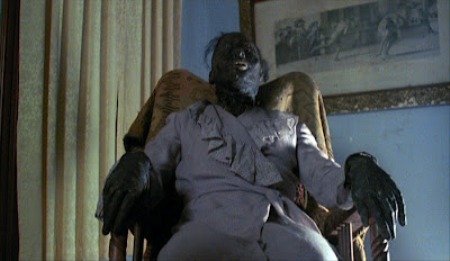
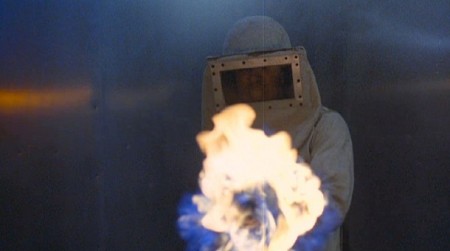
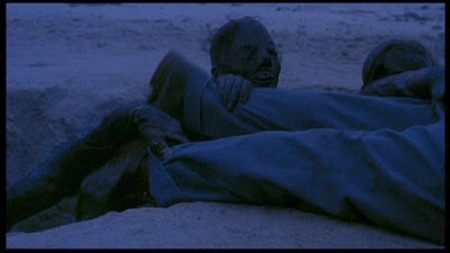
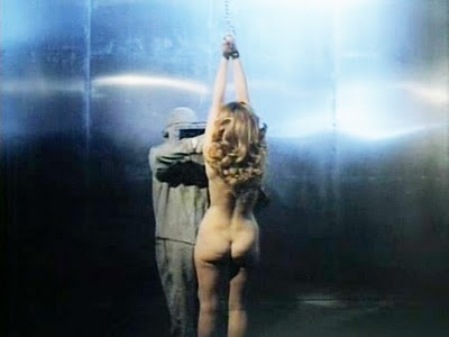

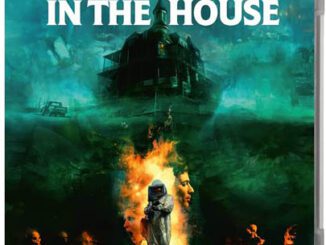
weird coincidence i watched this last night, 1st time i saw it ….was pretty gloomy , like Psycho with flame throwers 🙂